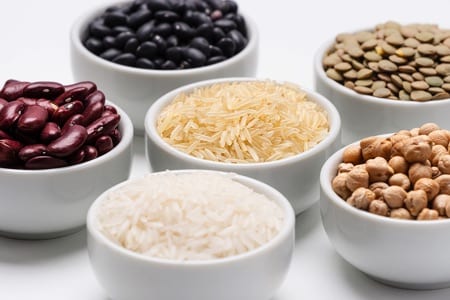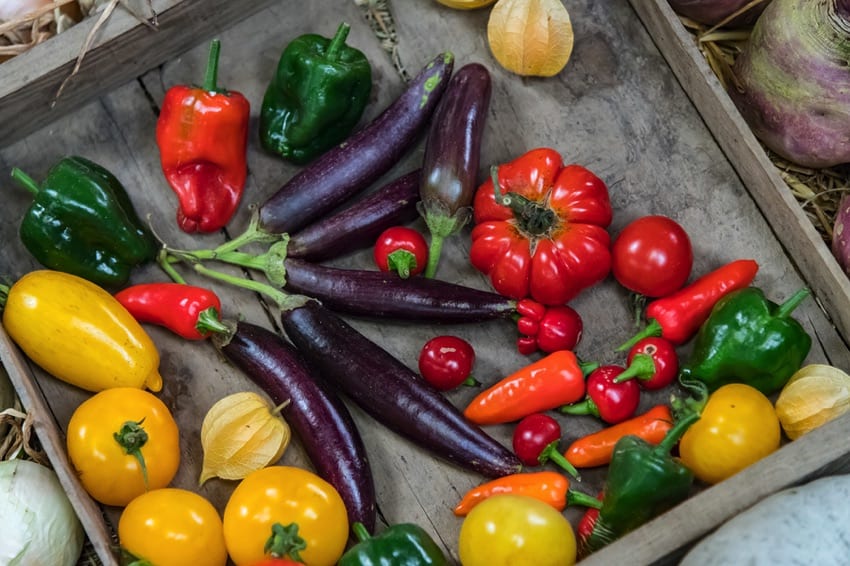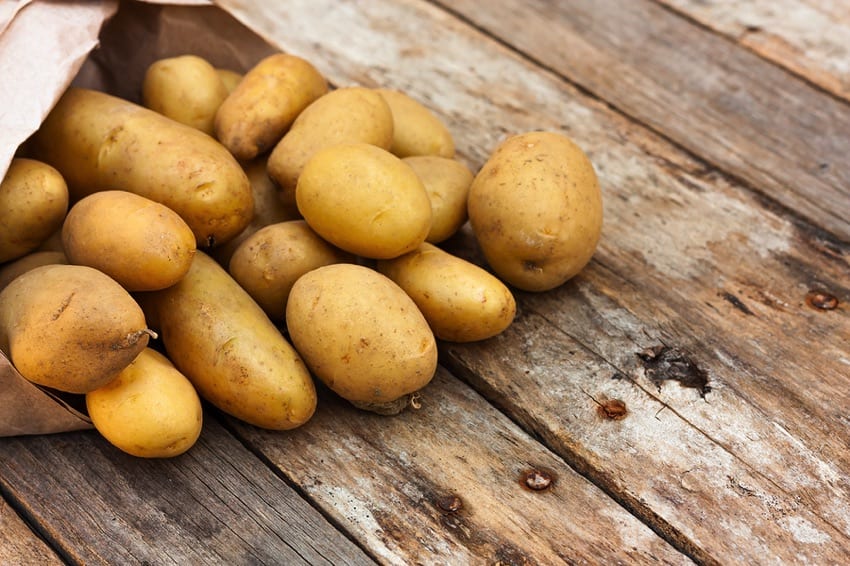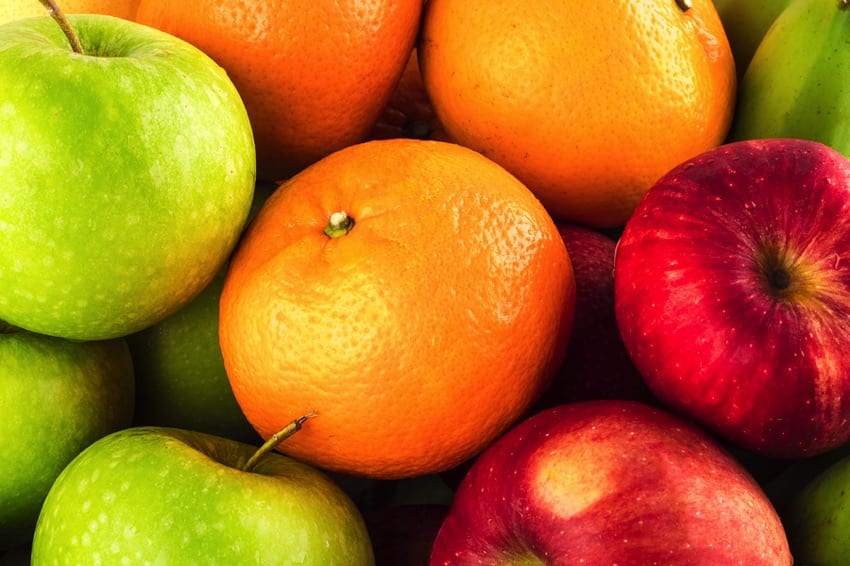 In 2017, former US cardiac surgeon, Steven Grundy, published a book called The Plant Paradox: The Hidden Dangers in “Healthy” Foods That Cause Disease and Weight Gain in which he took aim at the (then) little known group of carbohydrate-binding proteins called lectins.
In 2017, former US cardiac surgeon, Steven Grundy, published a book called The Plant Paradox: The Hidden Dangers in “Healthy” Foods That Cause Disease and Weight Gain in which he took aim at the (then) little known group of carbohydrate-binding proteins called lectins.
When we say little known, we mean little known by the wider public; biologists, nutritionists and other scientists have been aware of them since the 19th century and they have many useful applications (see below). The suggestion was that consuming foods that contained lectins could have various negative health implications.
In this article, we will first take a closer look at what lectins are, then we’ll delve into the science that supports or refutes the claims by Dr Grundy (and some others) that lectins have adverse health effects. We will then list the vegan foods that contain the highest lectin levels, and those that contain none at all.
What Are Lectins?
As mentioned, lectins are proteins which are macromolecules that contain at least one chain of the organic compounds called amino acids. We’ve written in detail about vegan protein elsewhere on the site, but it is worth pointing out that there are a lot of different proteins, with estimates suggestion there are something in the region of between 2 and 10 million proteins in the average human body alone.
One of the main properties of lectins is that they bind to carbohydrates; more specifically they bind to glycans – the carbohydrate polysaccharide portions of larger compounds that often also include proteins or peptides. This gives them a variety of useful functions in animals and other organisms. On the other hand, some feel this property might also cause some issues if too much lectin-rich food is consumed (more of which later).
Types of Lectins
According to the comprehensive textbook, Essentials of Glycobiology (it’s a great read, you should check it out!), there are various types of lectins including the following:
- C-type lectins – which are calcium-dependent lectins
- I-type lectins – concerned with immunoglobin
- L-type lectins – plant, legume and seed lectins
- Galectins – found in many different types of animal cells
- Xenopus lectins – found in eggs
There are many more besides, but we’ll not delve too deeply in this article and we’ve probably hit you with more science than you really wanted already! Within these various types of lectins there are many which are beneficial to humans, such as CLEC11A, which helps the development of bone structures. Others, however, can be extremely toxic, such as ricin, which comes from castor bean seeds (note that castor oil is not toxic).
Functions of Lectins
In humans and other animals, lectins have various functions including the following:
- Lectins help some cells interact with and adhere to neighbouring cells
- They help to regulate the amount of protein in the blood
- They help in the recognition of certain cells so that the body can remove them from the blood (for instance, some glycoproteins)
- They can help the immune system in various ways including helping to ensure a body’s defences do not work against itself
There has been lots of research undertaken to investigate the possible uses plants have for lectins. Despite this, at the time of writing, there appears to be no conclusion or universal acceptance of the main purposes of lectins in plants (i.e. L-type lectins, also known as “legume lectins”).
Lectins are also used by bacteria and viruses in some cases to reduce the chances of being expelled from a host body’s immune system.
Purified lectins also have various applications in medicine and industry. For instance, they are used to help scientists identify bloody types and to identify various antigens that could be present in someone’s blood. Which is partly why they were named lectins: the name is based on the Latin word legere which means to read or to select.
Lectins in Food

Lectins are present to a greater or lesser degree in all plants, though some foods contain particularly high amounts, with raw or lightly cooked legumes being a prime example (see table below for more examples). Lectins have been dubbed an “anti-nutrient” by some who suggest that consuming foods that are high in lectins can block the body’s ability to absorb essential or desirable nutrients. Indeed, this may be one of the biggest issues with them, although the science supporting this is sketchy to say the least.
L-type lectins – those found in legumes and seeds, amongst other plants – have been studied since the 19th century when it was discovered that lectins from some legumes had various effects, including the ability to cause red blood cells to clump together (agglutinate). They are found in the seeds of legumes in the greatest concentrations, though they are present in other parts of legume plants.
According to the aforementioned Essentials of Glycobiology textbook, the biological role of L-type lectins “remains a mystery”; despite there having been plenty of research undertaken, this has tended to focus on their applications rather than their inherent purpose. It is hypothesised that their function might be related to plant defence as some lectins are toxic to insects and other animals that might eat certain plants. The theory pushed by some of those advocating a low-lectin diet suggests that lectins humans consume could introduce a low level of toxicity to our bodies that has various negative effects.
Pros & Cons of Lectins in Food
There has been a variety of research carried out over the years that has attempted to ascertain whether there are any positive or negative health effects that result from the consumption of lectins. It would be handy if this research gave us a clear and simple answer – one way or the other. Alas, it appears that the consumption of lectins might well have positive and negative effects.
In a similar way to people being intolerant of or suffering negative health effects from gluten, some people are beginning to view lectins in a similar light. In the absence of definitive science either way it is thought that some people will see the possible health issues caused by lectins as an opportunity.
Indeed, the aforementioned Dr Grundy sells a “Lectin Shield” supplement (at a price of $79.95 for 120 capsules at the time of writing!) that is designed to, among other things, “promote regularity and pleasant bathroom visits”.
We are not against sensible use of vegan vitamins, minerals and supplements and they certainly have their place. Equally, we are not arguing that Dr Grundy’s supplement might not do what it says on the bottle, or indeed that there aren’t people who might need some kind of help alleviating the symptoms caused by excess lectin intake. We just think it is rather interesting that the solution to the problem first widely publicised by Dr Grundy has been found by… you’ve guessed it, Dr Grundy.
Should You Follow a High or Low Lectin Diet?
Now we know what lectins are (as long as we’ve got our head around the basics of the science involved), but it is still a little confusing: should we avoid lectins or try to consume more of them? Well, as with so many things in the world of nutrition, it really depends on a number of factors.
Lectins are not only present in legumes and other plants. They are also present in meat and dairy products, and given that lectins also have the ability to bind to fats and proteins as well as carbs, some suggests that lectins can occur in higher concentrations in animal products – especially dairy – than they do in legumes and seeds.
When trying to decide whether you should try to reduce your intake on lectins, it is worth noting that there have been reported cases of “suspected red kidney bean poisoning” in the UK. Whilst admittedly not many, just 50 incidents between 1976 and 1989, this is worth being aware of.
It was suggested that the lectins that are present in red kidney beans might have been responsible for such symptoms as “nausea, vomiting and diarrhoea”. The possibility of suffering poisoning from red kidney beans is supported by the US Food and Drug Administration who suggest that, “As few as four or five raw beans can trigger symptoms” that may include vomiting, diarrhoea and abdominal pain. They also go on to say, however, that boiling the beans in fresh water (i.e. not that in which the beans were soaked) for at least 30 minutes should “completely destroy the toxins”.
When it comes to this issue and possible dangers around other legumes there are a number of beans that contain certain toxins when raw or incorrectly prepared. However, not all of these toxins are lectins and, moreover, as long as you soak and cook the beans properly you will avoid any problems.
Other research, often undertaken using animals, suggests that inflammation and possible degeneration of the lining of the gut may result from the consumption (or over-consumptions) of lectins.
On the flip side, there is also research that suggests significant health benefits of lectins. For instance a research paper published in the International Journal of Molecular Sciences in 2017 suggested that plant lectins could be used to treat certain cancers of the digestive tract. Whilst it doesn’t draw a direct link between the consumption of lectin-rich foods and the prevention of or recovery from such cancers, it does point to the “anti-tumour and cytotoxic effects” of plant lectins, which could have significant implications when it comes to cancer prevention or treatment.
Vegan Foods That Are High in Lectins

Attempting to establish which foods contain high or low concentrations of lectins is not a straightforward process. This is partly because food manufacturers are not required to list lectin content on labels as they are with things like fat, sugar and salt.
The other problem is that comparing the rather general “lectin content” of one food with another is rarely simple as different foods contain different types of lectins. As such, when listing the foods that are “high” in lectins (or, later in the article, “low” in lectins), these are rather more vague than we would like (or as data might be in relation to something like sugar content or fibre content).
Note that many of the food listed below might have high or relatively high levels of lectins when raw, but the levels are often greatly reduced when the food in question has been properly cooked, usually at 100 degrees Celsius for at least 10 minutes.
For instance, red kidney beans are particularly high in lectins when raw and as said, they can cause poisoning. However, it is recommended to cook red kidney beans at 100 degrees Celsius for 20 to 30 minutes to deactivate the vast majority of the lectins and destroy the toxins. Other beans require different procedures. Boiling soy beans at 100 degrees Celsius for 10 minutes, for example, is likely to be sufficient to deactivate almost all of their toxins.
Another way to reduce the lectin concentration in some foods, namely grains and seeds, is by soaking and sprouting (germinating) them. This can also increase the nutritional value of certain foods too and is a good option for those on a raw vegan diet.
| High Lectin Foods |
|---|
| Red Kidney Beans |
| Potatoes |
| Soybeans |
| Peanuts |
| Tomatoes |
| Aubergine |
| Lentils |
| Peas |
| Peppers |
| Butter Beans |
| Haricot Beans |
| Chickpeas |
| Goji Berries |
| Rhubarb |
| Radishes |
| Barley |
| Rice |
Note that all of the abovementioned foods have various nutritional benefits such as being good vegan sources of protein and fibre, as well as containing various vitamins and minerals. As such it could very well be counterproductive to attempt to eradicate some or all of these from your diet unless you are getting specific reactions to them. It is always advisable to consult your doctor or a health professional before making significant changes to your diet.
Vegan Foods That Are Low in Lectins

Most vegan foods not mentioned above are generally seen to be relatively low in lectins, though in the absence of a widely accepted measurement and cataloguing system it is difficult to be 100% certain about levels.
| Low Lectin Foods |
|---|
| Celery |
| Chard |
| Cauliflower |
| Kale |
| Broccoli |
| Spouts |
| Apples |
| Oranges |
| Pumpkins |
| Onions |
| Cabbage |
| Ginger |
Conclusions: Are Lectins Good or Bad for You?
In general terms, lectins are needed by humans and in some form are other are present in just about any food you are likely to consume. Some foods, such as legumes, particularly when consumed raw, contain especially high levels of lectins, and on occasion this has found to be inflammatory to the digestive tract or even – in the case of raw red kidney beans – so toxic as to induce symptoms including nausea and vomiting.
Having said that, many of the effects of lectins in food can be mitigated by cooking the high-lectin food well at high temperatures, or by soaking and sprouting them. Also, it is thought that lectins might well have some health benefits, though further research is required to give definitive answers in relation to lectins and how much high-lectin food we should consume.
Overall, if you are not having any specific ill effects from foods that are classified as containing high concentrations of lectins, there is probably no reason to chance your food habits. Especially if you currently enjoy a varied vegan diet that includes plenty of vegetables, nuts, seeds and cereals as the health benefits of such a diet are likely – in most cases – to significantly outweigh any negative implications brought about by consuming lectins.
When it comes to the possible anti-nutrient properties of lectins, research is still ongoing as the absorption of nutrients is a complex process. There are many inter-related factors and whilst the Harvard School of Public Health states that lectins “can interfere with the absorption of calcium, iron, phosphorus, and zinc”, they also suggest that “the health benefits of eating these foods outweigh any potential negative nutritional effects”.
Moreover, it should be remembered that lectins are not the only anti-nutrients, as we touch on when discussing vegan iron sources. Ultimately, we feel the argument against lectins is weak. Provided you cook and prepare beans and legumes correctly the best advice is to include them in your meals as part of a varied, balanced and plant-rich diet.